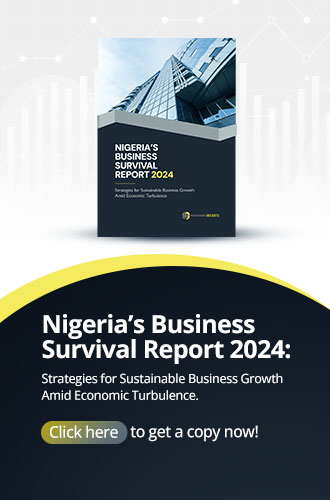In recent years, more people have begun seeking alternatives to white-collar employment as possible solutions to this problem, and one industry that has thrived from this has been Nigeria’s creative sector.

Nigeria is a country with significant human potential, and a large population, of whom a major percentage are within the 18-60 age demographic. However, there seems to be limited opportunities in the traditional work spheres for individuals to harness their potential, as the country’s unemployment rate continues to sit at a whopping 33% as of the last quarter of 2022.
In recent years, more people have begun seeking alternatives to white-collar employment as possible solutions to this problem, and one industry that has thrived from this has been Nigeria’s creative sector. This sector has somewhat solidified the gap left by other sectors in the country - to an extent - as the once neglected industry is now projected to reach a valuation of $15 billion by 2025. Nigeria’s creative sector, as categorized by the National Bureau of Statistics (NBS), is comprised of five sub-sectors: Media and Entertainment, Beauty and Lifestyle, Visual Arts, as well as Tourism and Hospitality.
The creative sector currently employs about 4.2 million people across the five sub-sectors. Our projections also suggest that the creative sector can potentially create an additional 2.7 million jobs in the next 4 to 5 years. The Beauty and Lifestyle industry currently employs 2.1 million people, and those numbers are projected to reach 2.9 million by 2025. The Entertainment industry currently employs 1.4 million people, and it is estimated that those numbers will reach 2.1 million by 2025. Visual Arts is the third highest employer in the creative sector with 400,000 people under its employment, with figures expected to reach 1.2 million by 2025. Tourism, Hospitality and Media were seen to employ the least in the sector with Tourism and Hospitality having 200,000 people under their employment, while Media had 100,000.
In terms of revenue and earnings, a breakdown of the $15 billion shows that Nigeria is to generate $7.7 billion in 2021, $9 billion in 2022, $10.7 billion in 2023, $12.6 billion by 2024 and $14.8 billion by 2025. However, data provided by Statista shows that Nigeria’s creative sector performed better than the aforementioned projections.
The data shows that Motion Picture and Music Recording accounted for roughly $53.5 billion of Nigeria's GDP in 2021. Telecommunications and Information Services stood at $647 billion, representing the most valuable industry in Nigeria’s creative sector. While Broadcasting made $3.1 million, In 2022, the creative sector made $4.2 billion. This is according to reports released by Jobberman, Nigeria premier recruitment service.
A breakdown of the report shows that Media and Entertainment made $1.5 billion, Beauty and Lifestyle made $2.1 billion, Visual Arts made $400 million, while Tourism and Hospitality made $200 million. These numbers are $4.8 billion short, when compared to the initial $9 billion projected revenue for 2022.
Reasons for this exponential growth in Nigeria’s creative sector can be attributed to increased internet and mobile penetration, as well as increased youth population and urbanization. Therefore, companies active in the sector need to make dramatic shifts by generating quality content and value chains in the field.
Comments
Thoughts?
We won't share your email address. All fields are required.

Michael
5 months agoThis is a deep and penetrating insight. Please can you extend the analysis backwards say from 2000 instead of from 2021 or better still from 2014 when Nigeria's GDP was rebased? I enjoy reading the article. My only concern is the validity of the statistics so presented with respect to the creative arts industry